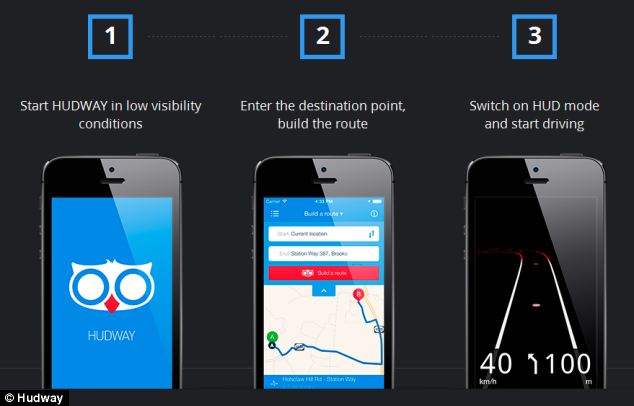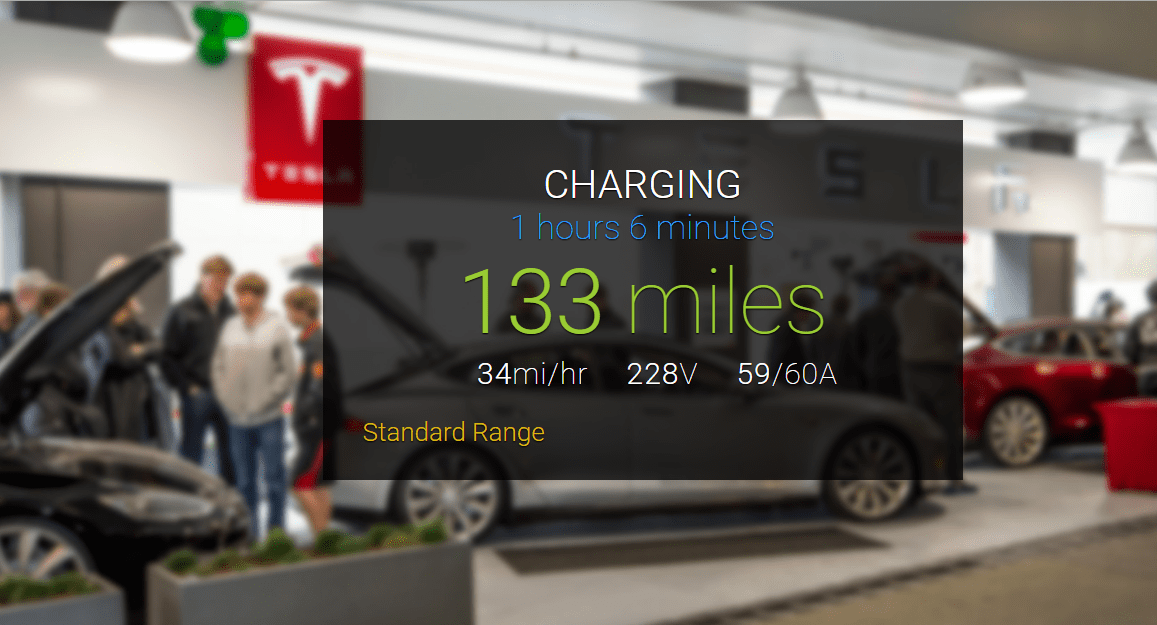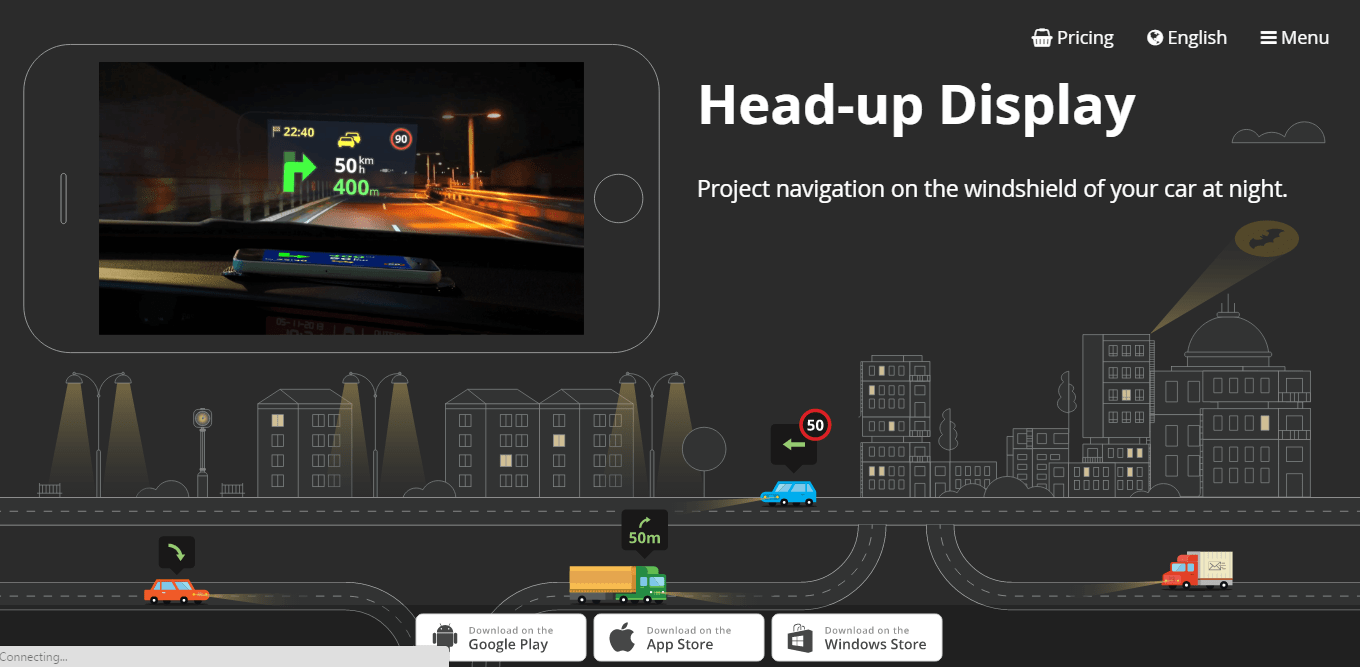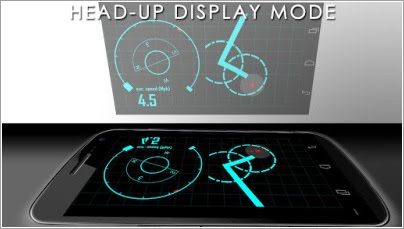The heads-up display (HUD) for cars has been making a flutter in the automotive industry for the experience it delivers to end users.
The Automotive Heads-up Display (HUD) market is expected to reach $2.09 bn by 2022, according to a report released by Credence Research in May 2016.
In the automotive value chain, OEMs (Original Equipment Manufacturers) or car manufacturers provide a dashboard infotainment or a car HUD system in some of their latest car models.
This HUD system, which is designed by the car companies’ equipment supplier, technology vendor or in-house product team, is as an assembled product that comes with a pre-packaged hardware and software.
There also are HUD systems designed by the after-market companies. These cater to customers who own an older model of the car and are not willing to upgrade for an HUD. This is also an assembled product.
A software-only HUD system:
A heads-up display mobile app qualifies as an all-software system for which the mobile phone acts as the hardware. With increasing popularity of in-car infotainment and automotive HUD systems, there are many HUD apps flooding the app-stores.
These apps give end users a glimpse of the HUD experience with the following advantages:
- No additional hardware purchase
- One can buy additional features, as per the individual requirement, through in-app purchases
- It’s easier to uninstall a particular HUD app and install another based on the preference
Now, what are the downsides?
You will miss out on the whole gamut of features (offered by OEMs/suppliers/after-market companies) that can enrich your driving experience
- gesture and voice control (touch-less controls)
- Driving/navigation alert,
- receiving/making calls and messages through dashboard
- zero-distraction driving
Having said that, an HUD app can be a good start before you buy an assembled product from the after-market or upgrade to a more advanced car model.
Here is an analysis of what’s available in app stores.
HUDWAY App
An offering from a Russian start-up, the Hudway app projects the navigation from your cellphone onto the windscreen. The app only works at night and in low light settings though.

(Source – hudwayapp[dot]com)
To combat this deficiency, the company has developed Hudway Glass, a device that will project from the smartphone at all times. Hudway Glass is still in the works and will cost $49.
The app, which is freely available, has mixed reviews. Complaints of bugs are plenty and while users are impressed with the concept, the execution leaves much to be desired.
Tesla for Glass and Hyundai for Glass (wearables)
Working with Google Glass, two different apps are present in the market—to sync with Tesla and Hyundai vehicles.
The apps let you sync your Google Glass with your car to help display navigation, check battery levels, and lock and unlock the car’s doors.
The obvious downside is that you need to own Google Glass and a Hyundai or a Tesla to use these apps.

(Source – glasstesla[dot]com)
Sygic Head-up Display
The product of a Slovakian company, this is a navigation app with the HUD feature to project on your windscreen.
While the app is free, more features are available on payment.
Sygic’s overall reviews are above average, but in regions of Asia, the Middle East and Australia, users complain of poor coverage.

(Source – sygic[dot]com)
Navier HUD
Whilerain Studio’s HUD has found fans with its efficient functioning and customizable display, but those who want finesse from the HUD aren’t satisfied.
Occasional errors in navigation and the app’s inability to sync with contacts leave users who want a top-notch experience dissatisfied.

(Source – techgravy[dot]net)
Related Posts – learn more about Car Heads-up Display and Infotainment
What is Car HUD system? Learn about all the critical hardware modules
Car HUD embedded software, hardware design – an EFY analysis
Car Heads-up Display (HUD) – product features

What is an automotive OEM (Original Equipment Manufacturer)?
An original equipment manufacturer (OEM) is a company whose products are used as components in the products of another company. The OEM generally works closely with the company that sells the finished product and customizes designs based on that company’s needs.
Source: Investopedia.com
An automotive OEM manufactures parts that are used in vehicles, e.g. infotainment systems.
What is an aftermarket company in the automotive industry?
The automotive aftermarket is the secondary market of the automotive industry, concerned with the manufacture and sale of all vehicle parts, chemicals, equipment, and accessories, after the sale of the automobile by the OEM to the consumer. The parts, accessories, etc. for sale may be manufactured by the OEM or an aftermarket company.
Source: Wikipedia


